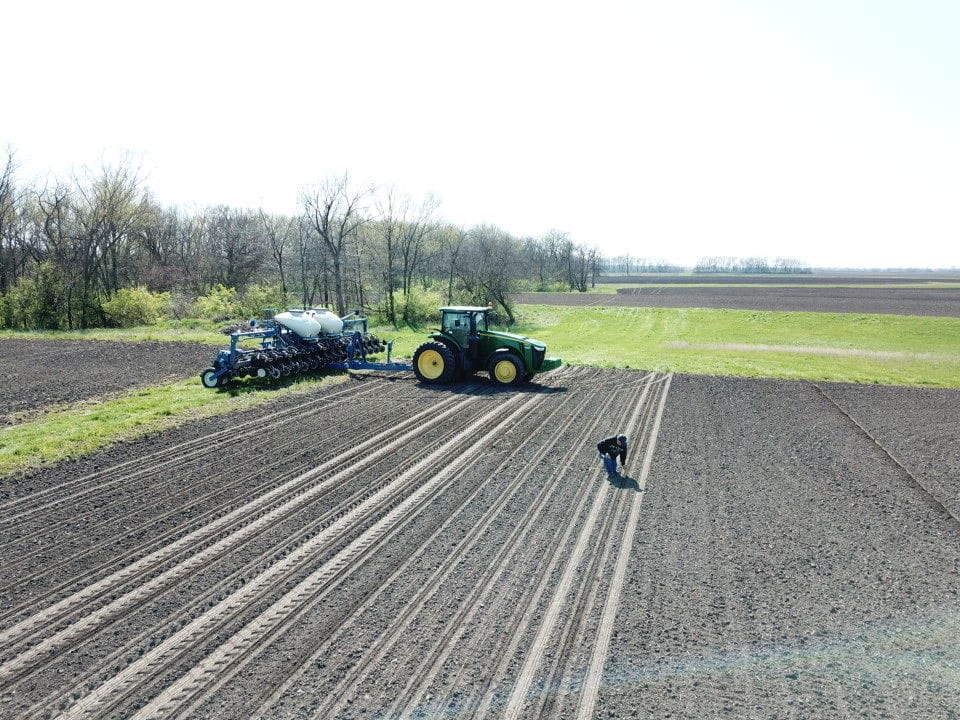About mid-day on Wednesday, April 22, we finished planting our corn and started planting our soybeans. Rain that night caused us to wait for a day or two, but with 6 or 7 full days of good conditions, we will get our soybeans planted. We hope that happens by the end of the month, but that will depend on the weather.

Every year, we are trying to plant soybeans a bit earlier. Some crops, like corn, require a set amount of time to mature. But soybeans are an indeterminate crop. That means they will keep growing as long as conditions allow. Soybeans shut their growth system down based on night length at the end of the season, so the earlier we plant the crop, the more time it will have to add pods and fill them out.
While more U.S. farmers choose to plant their soybeans before their corn, we still plant corn first to ensure it has time to dry in the field before we harvest it. In fact, we started planting corn on April
8, although cool temperatures the following week caused us to wait several days before finishing. This order of work is what makes sense for our farm right now.
But getting our soybeans (mostly) planted in April is very promising. Soybeans planted today have more yield potential than soybeans planted next week.

Within the next week or two, we will contact our local cooperative, where we buy inputs like fertilizer and pesticides, to have them apply herbicide to our soybeans to control weeds. We don’t own the equipment to do this ourselves, so we rely on the local company for this step. Their spray rig operators maintain the license and continuing education required to apply pesticides, so we can focus on other work.
In our no-till soybean fields, like the first ones we planted on April 22, weed control includes a herbicide that controls weeds on contact mixed with herbicides that release their active ingredients over time to provide residual control that prevents weeds from growing until the soybeans are established in the field. In other fields, tillage controlled weeds that already started growing this spring, so those fields will just have residual herbicides applied.
This time of year is really fun, especially when the seed goes in the ground smoothly like it has been doing. But at the same time, we know the economics are not great. In Illinois, our shelter-in-place order has been extended through this month and will likely go into May. We are planting what has the potential to be a great crop. But we don’t know if we will be able to break even or make any money this year because of low crop prices. In fact, we will need great yields to cover our expenses.

Our 50/50 split between soybeans and corn helps us spread our risk a bit, but it’s a challenging time to be a farmer. We hope the global economy recovers quickly from the COVID-19 pandemic, but we need many things to happen before this fall. For that reason, we need our global customers to take advantage of very competitive U.S. soybean prices. We plant this crop with their needs in mind.
And so, we choose to focus on the satisfaction of giving our 2020 crops a good start today.

